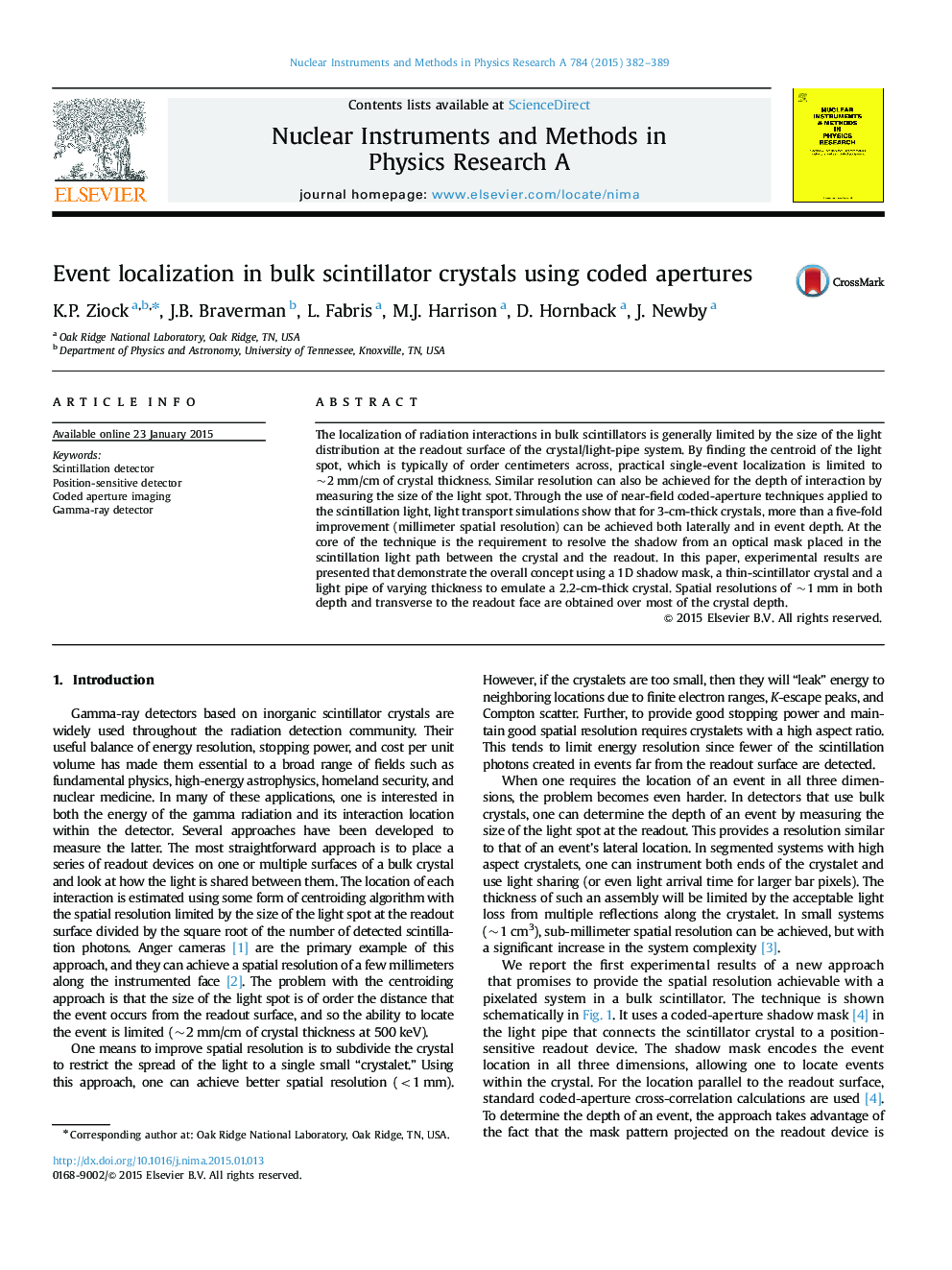| Article ID | Journal | Published Year | Pages | File Type |
|---|---|---|---|---|
| 1822485 | Nuclear Instruments and Methods in Physics Research Section A: Accelerators, Spectrometers, Detectors and Associated Equipment | 2015 | 8 Pages |
The localization of radiation interactions in bulk scintillators is generally limited by the size of the light distribution at the readout surface of the crystal/light-pipe system. By finding the centroid of the light spot, which is typically of order centimeters across, practical single-event localization is limited to ~2 mm/cm of crystal thickness. Similar resolution can also be achieved for the depth of interaction by measuring the size of the light spot. Through the use of near-field coded-aperture techniques applied to the scintillation light, light transport simulations show that for 3-cm-thick crystals, more than a five-fold improvement (millimeter spatial resolution) can be achieved both laterally and in event depth. At the core of the technique is the requirement to resolve the shadow from an optical mask placed in the scintillation light path between the crystal and the readout. In this paper, experimental results are presented that demonstrate the overall concept using a 1D shadow mask, a thin-scintillator crystal and a light pipe of varying thickness to emulate a 2.2-cm-thick crystal. Spatial resolutions of ~1 mm in both depth and transverse to the readout face are obtained over most of the crystal depth.
